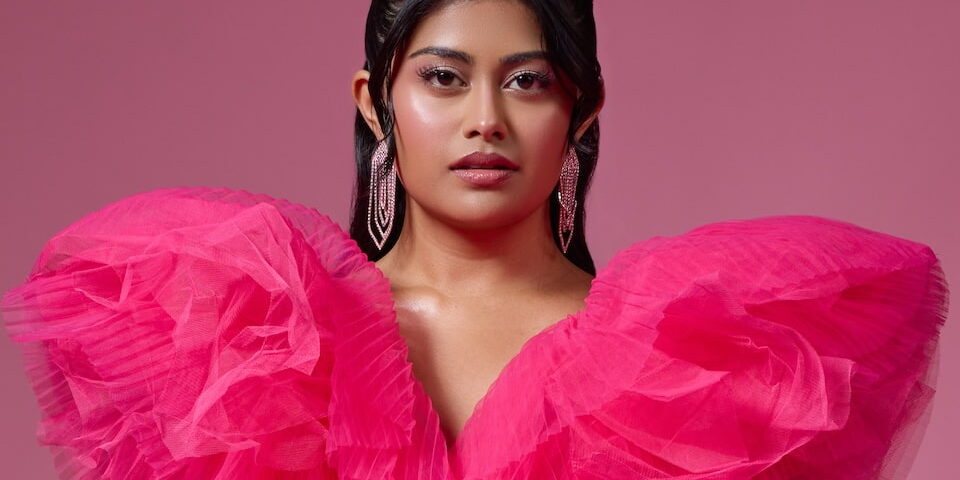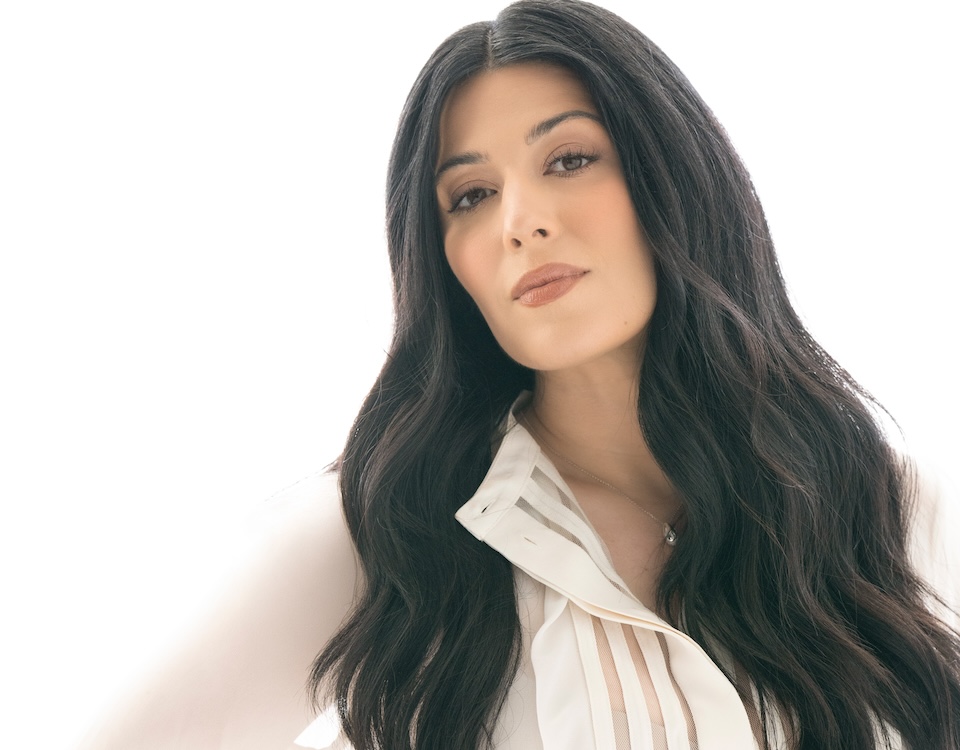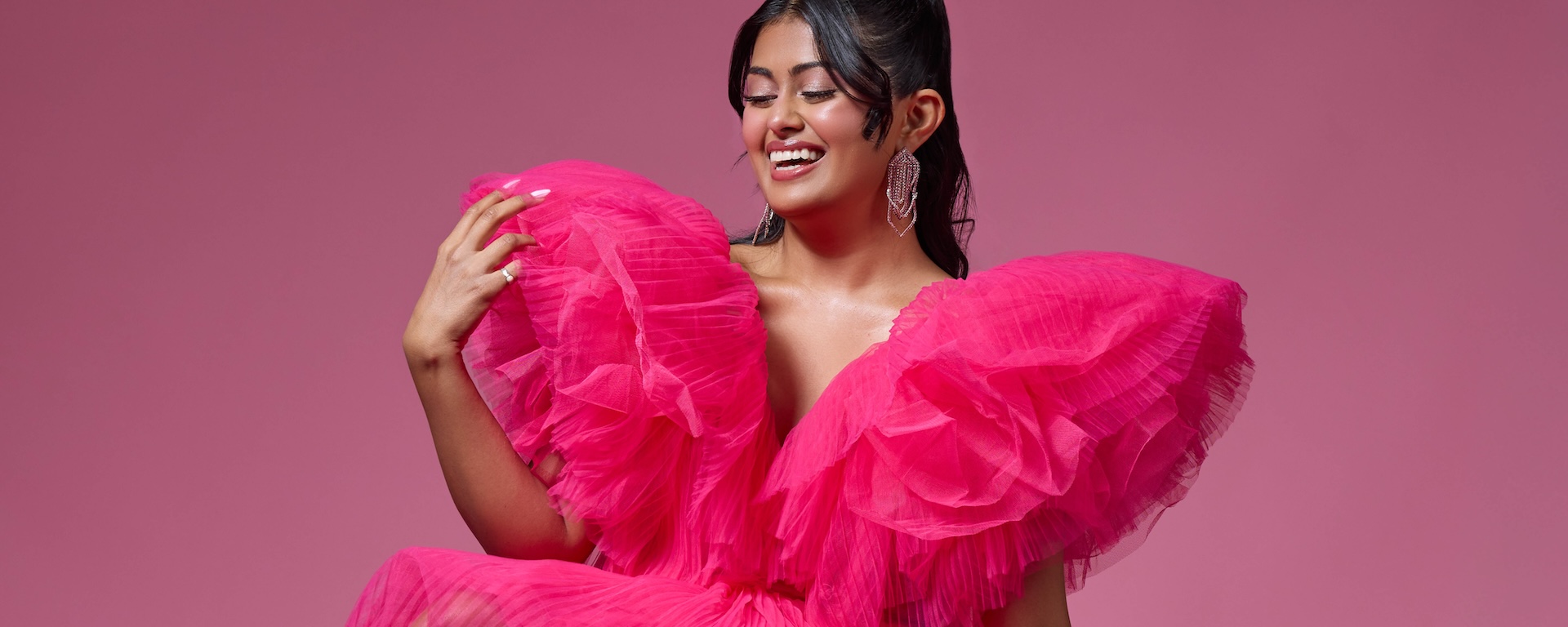
ASHLEY R. SINGH
IS DOIN’ IT HER WAY

BY EBBY MAGAZINE
Comic creator, engineer-turned-actress, and unapologetic storyteller—Ashley R. Singh makes her feature-film debut in Doin’ It, blending bold humor and cultural truth in every character she brings to life.
PHOTOGRAPHY BY PAUL HAIRLSON

“SUCCESS IS DOING WHAT I LOVE, PUSHING BOUNDARIES, AND REPRESENTING MY PEOPLE IN A POSITIVE WAY.”
ASHLEY R SINGH, ACTRESS
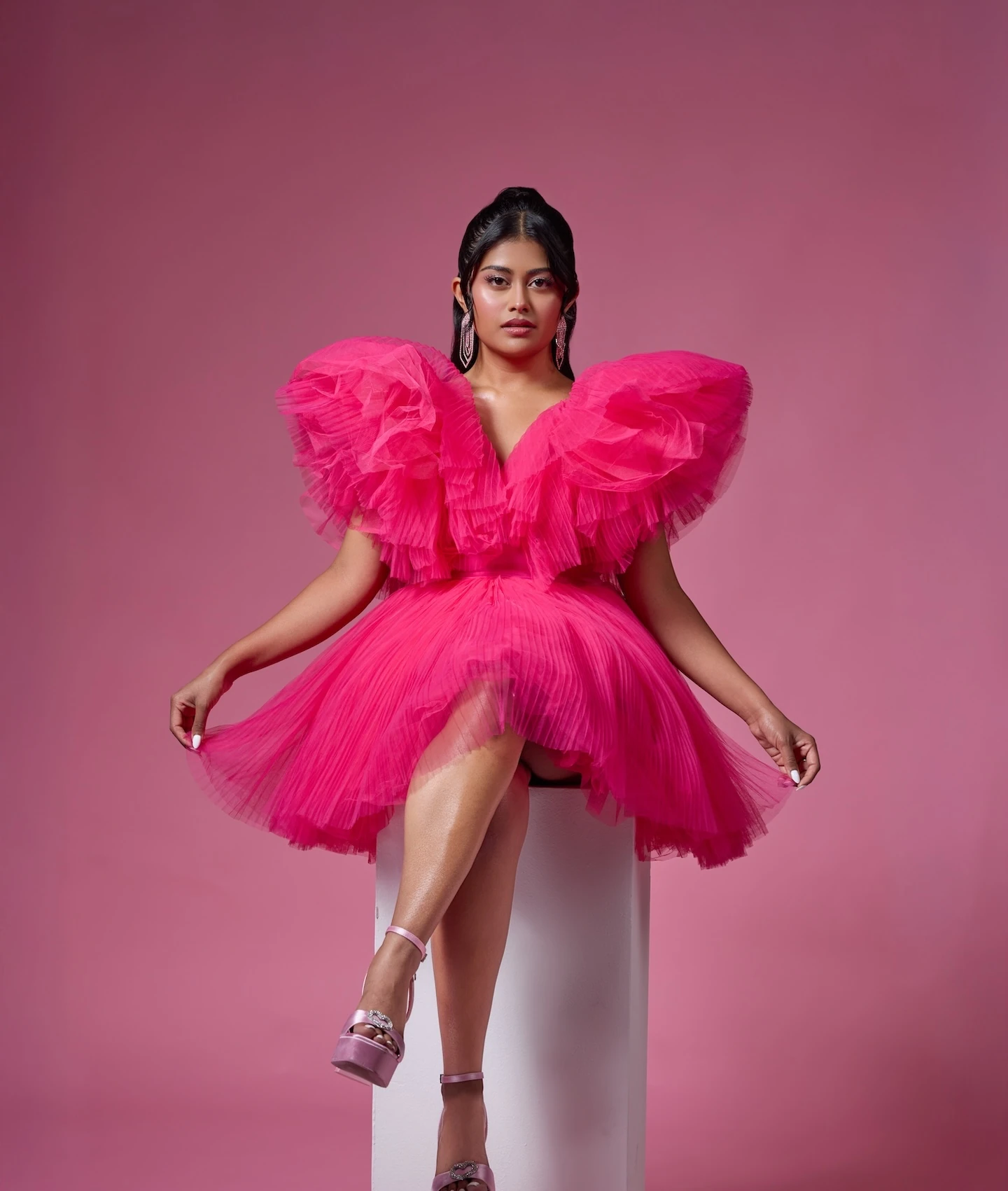
On social media, even one sketch can change everything. For Ashley R. Singh, that pivotal moment came during long quarantine, when a goofy video with her dad quietly exploded into a million-view sensation, launching her from suburban Chicago to a starring role in Doin’ It, a sharp new comedy with Lilly Singh premiering this fall.
Ashley’s path isn’t typical and that’s exactly the point. A trained classical vocalist and Bollywood dancer with a degree in engineering, she grew up straddling cultures, equations, and auntie parties. Today, she turns those lived contradictions into comedy that disarms, reclaims, and reflects. Whether she’s remixing family dynamics on TikTok or stepping into “Crystal,” her fearless character in Doin’ It, Ashley isn’t just playing a role, she’s shifting the lens.
With more than 300,000 followers and a voice that blends sarcasm with heart, Ashley bridges platforms, generations, and identities. She has built a community that sees itself in her sketches, her characters, and her bold storytelling. In this exclusive interview, she opens up about moving beyond algorithms into improv, what it means to claim space as a South Asian woman in comedy, and why joy itself is not just entertainment but a quiet act of rebellion and self-acceptance.
“I WANT TO OPEN SPACE FOR PEOPLE LIKE ME, AND FIGHT AGAINST ASIAN HATE. I WAS LUCKY TO GROW UP IN A DIVERSE TOWN THAT MADE ME COMFORTABLE IN MY OWN SKIN, BUT NOT EVERYONE GETS THAT PRIVILEGE. ”
When did it first hit you that your sketches were turning into something bigger, a real acting career?
It started with me making relatable content and goofy skits. Then I began creating content with more meaning—like beauty standards, movie references, and little scenes. That’s when I realized I enjoyed acting in different capacities: not just the goofy stuff, but also dramatic and intense roles that leave you thinking. I’ve always imitated people, done skits, and impersonated family members—it’s just something I’ve been inclined to. But in 2020, I really harnessed it and took it seriously.
In Doin’ It, you play Crystal. What was it like stepping into her world, and was there a moment she felt like more than just a role?
It was incredible—she’s bold, fun, quirky. With her blue eyeliner and pigtails, she’s a carefree brown girl figuring out life and her sexuality. The more I played her, the more I loved her. It felt liberating to step into that free-spirited energy, especially because brown stereotypes are often shown as heavy, serious, or academic. It was refreshing to show that South Asians come in all forms—that brown girls can be fun-loving and free-spirited too.
When you stepped onto set for the first time, did your engineering or performance background show up in a way you didn’t expect?
Definitely. On set, you need a certain sureness in your craft. Performing taught me not to depend on validation or reactions, but to trust myself. So even though I was nervous, I trusted that I understood Crystal and could represent her well. My engineering background also helped—I naturally go into the technical side, breaking down who a character is, what they do, and adding depth I might not have considered otherwise.
You’re used to writing your own lines. What surprised you about stepping into someone else’s script—and how did you still make it yours?
It was fun, actually. When you write your own lines, you already know how you want them delivered—you’re the writer, director, and editor. With this, some lines didn’t feel as natural, but I loved finding my way to present them. And collaborating with our director, Sara Zandieh, was fantastic. She helped me understand her vision, and together we brought Crystal to life.
Can you share a filming moment, a mistake, surprise, or connection, that changed how you saw yourself as an actress?
The connection with the cast was incredible. They were all more experienced, and just watching them was amazing. I learned so much—from how they memorized lines, to how they improvised, to how they enhanced scenes. It showed me that acting is fluid—there isn’t just one right way.
Balancing comedy and cultural commentary is tricky. Did engineering discipline give you structure, or did you find freedom in the mess?
I’d say structure first, then mess later. In the beginning, perfectionism held me back—I felt every video needed heavy planning and editing. Later, I realized even the “low effort” or small life snippets had value. That shift let me post more freely and embrace being messy, which actually made me more authentic.
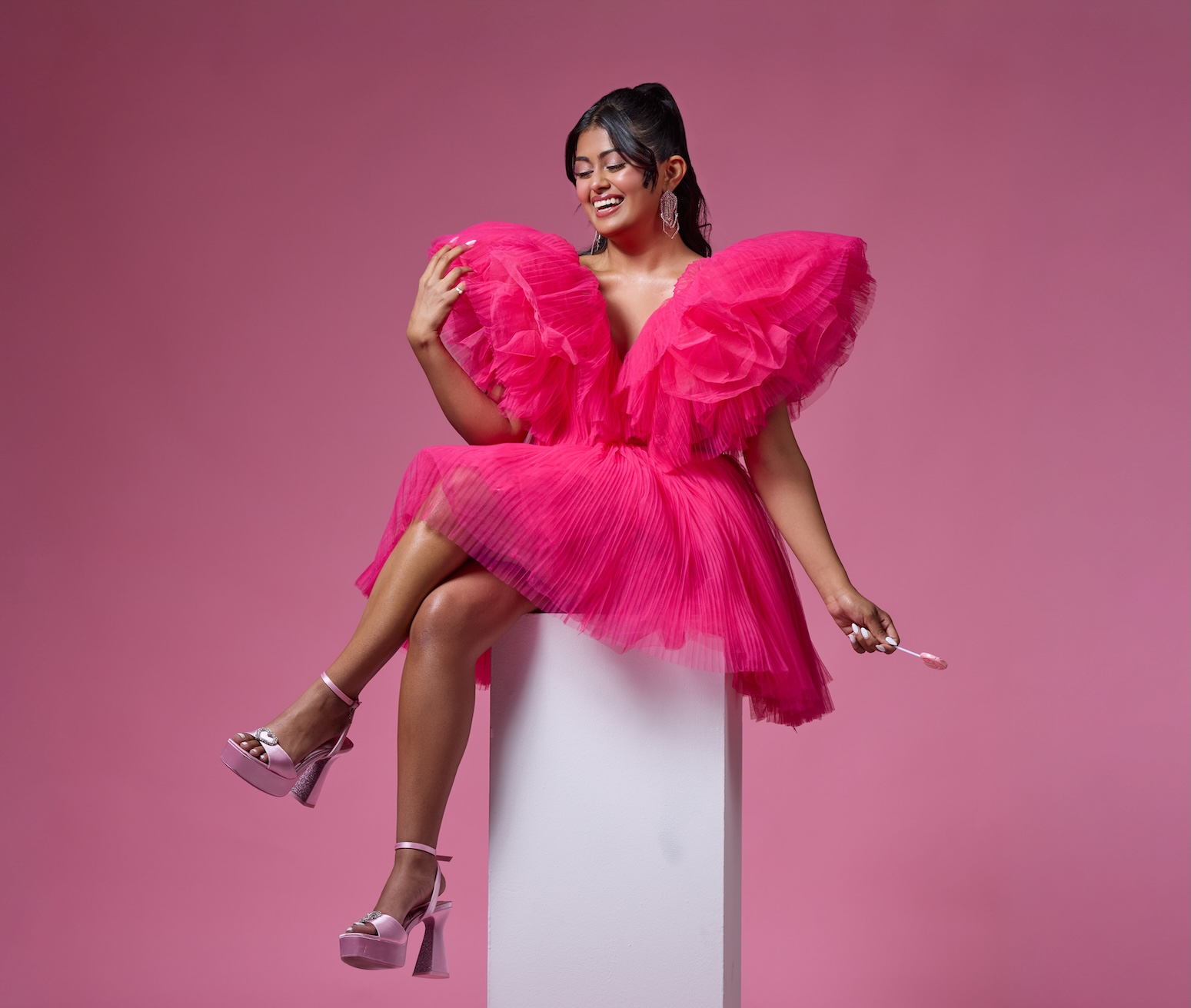
You’re representing many things, for example: South Asian voice, female storyteller, self-starter. Which role feels most important, or which do you hope frees others?”
My South Asian identity lights my fire daily. I want to be part of the movement toward more diverse storytelling in Hollywood. Growing up, I didn’t see what I wanted on-screen, so I decided to create it. I had unconventional South Asian parents, an unconventional passion, and I didn’t fit in the “typical” box. I want to open space for people like me—and fight against Asian hate. I was lucky to grow up in a diverse town that made me comfortable in my own skin, but not everyone gets that privilege. Everyone deserves that comfort and pride.
As “Crystal” awakens to her own voice on-screen, what does awakening look like off-screen for you—especially for young South Asian creators who see themselves in your work?
I’d say awakening off-screen is about embracing every side of yourself and being comfortable with that. Different rooms may try to pull out certain parts of you, but the real strength is staying true to yourself—without changing for external expectations.
Humor has always been a tool for change. How do you hope people leave the theater feeling differently?
I hope people laugh, escape, and forget their worries for 90 minutes—that’s the beauty of film. But deeper than that, I hope people feel more comfortable with themselves and their sexuality. I remember exploring mine as a teenager and calling my sister crying because of the guilt I felt—when in reality, I was just being a normal teenage girl. I want to spark more open dialogue so people don’t feel that heaviness and guilt around pleasure, sexuality, and love.
What’s a small, un-Instagrammable daily ritual that keeps you centered?
Honestly, I go on walks with a very specific uplifting playlist. I let myself daydream—about roles I want, films I hope to be in, and the future I see for diversity and love in this industry. It’s grounding but also lets me escape.
Today, what does success look like without measuring it in likes or box office?
Success is doing what I love, pushing boundaries, and representing my people in a positive way. It’s making people laugh, making them feel seen, and making them feel heard.
What does “living your best life” look like right now?
Living my best life means doing what I love while being surrounded by the people I love. Family and friends are everything. Passion is what gets you up in the morning. Together, that’s all you need to conquer each day and make the most of the time we’re given.

